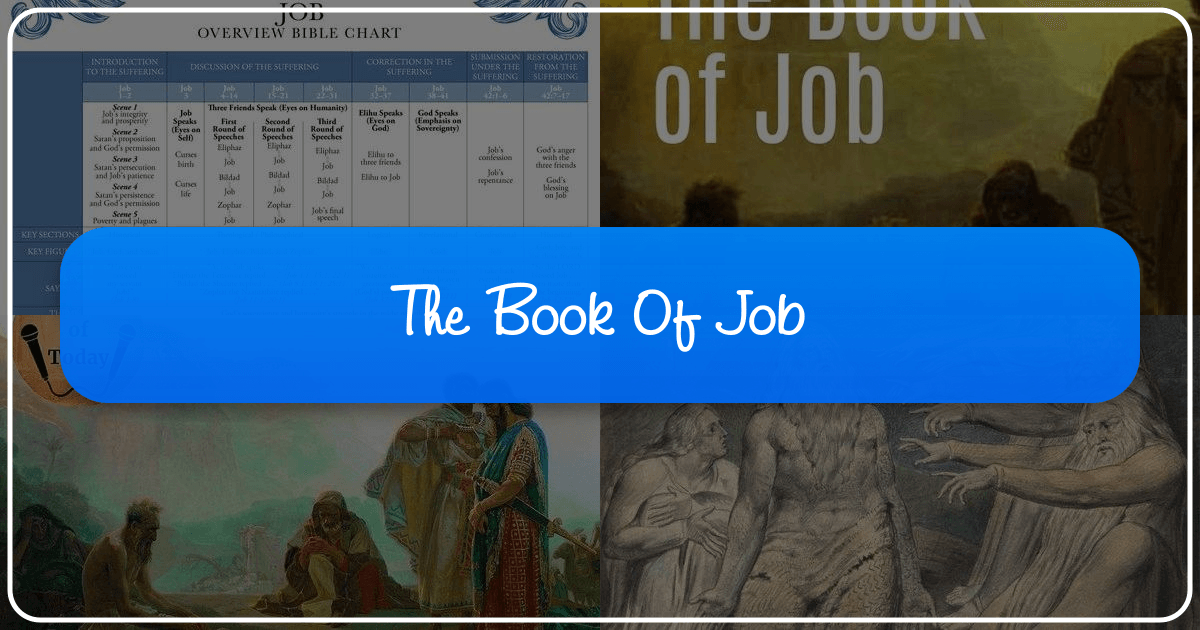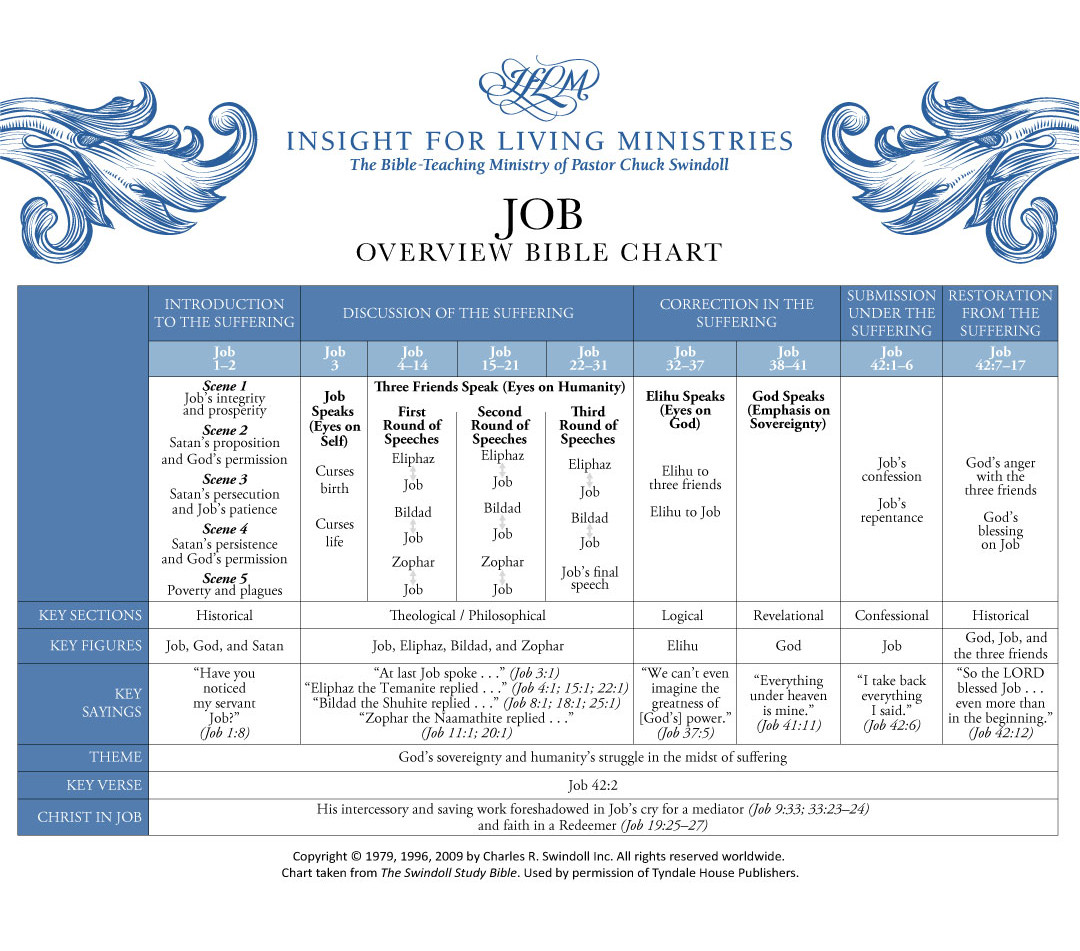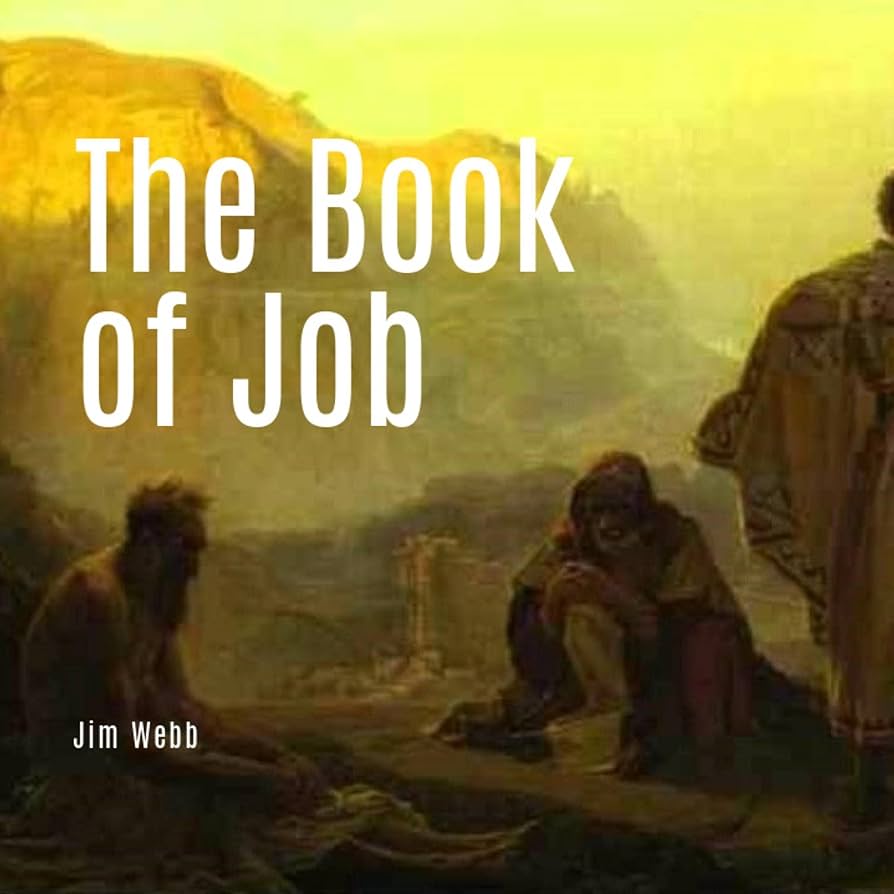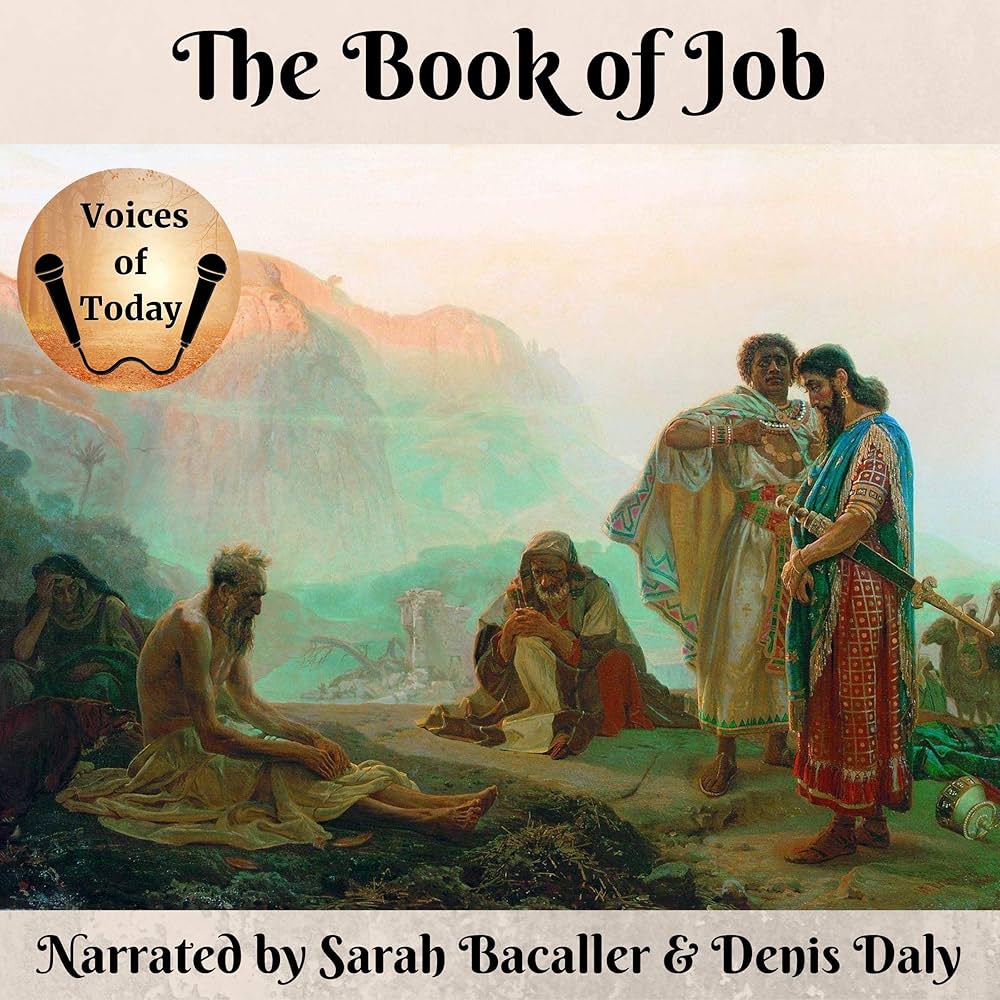The Book of Job: A Multifaceted Exploration Across Genres and Disciplines

The Book of Job, a cornerstone of religious and philosophical discourse, continues to captivate readers centuries after its composition. Its enduring appeal stems from its complex exploration of themes such as suffering, justice, faith, and the nature of God. This article delves into the Book of Job, examining its literary merit, historical context, and lasting cultural influence across various disciplines. We will explore the book through the lenses of different academic disciplines as well as the practical topics of books, authors, reading habits, libraries and cultural impact.
II. Literary Analysis of the Book of Job
The Book of Job is a unique literary work, defying simple categorization. It seamlessly blends poetry and prose, employing distinct literary devices to convey its profound message. The poetic sections, particularly Job’s speeches and God’s responses, are characterized by vivid imagery, powerful metaphors, and intricate parallelism. These literary techniques create a dynamic and emotionally resonant reading experience, capturing the intensity of Job’s suffering and the grandeur of God’s power.

III. Genres and Classifications
While often classified as wisdom literature, the Book of Job transcends simple genre boundaries. Its structure resembles a dramatic play, with dialogues between Job and his three friends forming the core of the narrative. The poetic passages exhibit lyrical intensity, resembling elements of epic poetry. Furthermore, the book grapples with theological questions that are characteristic of religious texts and philosophical works. Therefore, classifying the Book of Job into a singular genre would be an oversimplification, reducing its rich complexity.
IV. The Author and His Context
The authorship of the Book of Job remains a topic of scholarly debate. While the text itself offers no explicit attribution, many scholars suggest a possible date between the 6th and 4th centuries BCE, during a period of significant cultural and intellectual exchange in the ancient Near East. The author’s knowledge of the ancient world, their familiarity with various poetic traditions, and the philosophical depth of their arguments suggest a highly educated and sophisticated individual.

V. Authorial Intent and Themes
Scholars debate the precise authorial intent behind the Book of Job. However, several key themes emerge, giving a potential reading of the author’s goal. The central question revolves around the problem of suffering. Job’s seemingly undeserved afflictions challenge conventional notions of divine justice and reward, raising profound questions about the relationship between piety and prosperity. The text explores the limits of human understanding in relation to God’s plan and introduces the concept of faith as an essential response to suffering that transcends the expectations of a traditional reward-punishment system. Furthermore, the different perspectives expressed by the characters, such as Job’s complaints, the friends’ philosophical arguments, and God’s majestic pronouncements, demonstrate the complexities inherent in understanding suffering and grappling with divine inscrutability.
VI. Reading and Learning from the Book of Job

The Book of Job offers readers a multitude of opportunities for personal growth and intellectual engagement. Its exploration of profound themes invites contemplation and promotes critical thinking. The story’s dramatic arc and compelling characters resonate on an emotional level, making it both accessible and challenging.
VII. Educational Value and Life Lessons
The Book of Job’s educational value lies in its exploration of complex human and theological questions. It provides insights into the human experience of suffering, grief, and loss, illustrating the myriad ways people respond to adversity. It also challenges the reader to engage in a deeper examination of one’s own beliefs and the nature of their relationship with God or a higher power. Furthermore, the text showcases different approaches to dealing with difficult life situations; some characters react with anger and despair, others with stoicism and faith. The reader can draw lessons from these diverse responses, finding potential avenues of reflection on how they themselves navigate and cope with similar challenges in their own lives. The Book of Job serves as an excellent starting point for a thoughtful discussion about faith, resilience, and the meaning of life in the context of suffering.
VIII. Libraries and Archives: The Book of Job’s Preservation
The Book of Job’s preservation across millennia is a testament to its enduring importance. The text is found in various ancient manuscripts, reflecting its significance across different religious traditions. Public and digital libraries worldwide house numerous copies of the Book of Job in various languages and translations, thus ensuring the book’s continued accessibility to a diverse readership. Moreover, academic institutions frequently incorporate the Book of Job into their curriculum.
IX. Rare Collections and Scholarship
The Book of Job can also be found in various rare and valuable collections housed in university libraries and archives. These collections include early printed editions, manuscript fragments, and scholarly commentaries dating back centuries. These materials provide insights into the book’s reception throughout history and the ongoing scholarly engagement with the text, illustrating its role in shaping theological and philosophical thought and the ongoing evolution of scholarship. The diverse array of critical and interpretative approaches presented through the study of the Book of Job shows the text’s persistent relevance and capacity for inspiring new ideas and discussions.
X. The Book of Job’s Cultural Impact
The Book of Job’s influence extends far beyond religious and academic circles. It has inspired countless works of art, music, literature, and drama. Its profound themes have resonated with artists and thinkers from across cultural and historical contexts.
XI. Adaptations and Literary Influence
The Book of Job’s narrative structure, compelling characters, and complex thematic concerns have captivated artists across various genres for centuries. Countless adaptations across literature, theater, and visual arts can trace their inspiration back to this Biblical story. These include paintings, sculptures, poems, plays, operas, and novels, illustrating the book’s enduring relevance and capacity to inspire artistic interpretations across a wide range of forms and aesthetics.
XII. Awards and Recognition
While the Book of Job itself predates modern literary awards, the numerous translations and critical studies that have emerged over centuries have garnered significant recognition in the academic community. Many scholars consider it a major work of literature and theology. Various translations and critical editions of the Book of Job have been frequently praised for their scholarship and literary merit. The ongoing scholarly attention, both within religious studies and literary criticism, demonstrates the lasting impact of this text on academic discourse and its role in shaping the history of ideas and the evolution of hermeneutical approaches to religious texts.
XIII. Communities and Discussions
The Book of Job’s rich content and complex themes inspire extensive discussions within religious and philosophical communities. These discussions provide opportunities for dialogue, reflection, and the exchange of various perspectives on the book’s interpretation. Furthermore, the Book of Job’s thematic resonance allows for ongoing conversations that are trans-cultural and trans-historical. The book’s central problems, such as the nature of justice and the experience of suffering, are fundamental to the human condition. This allows discussions involving the Book of Job to transcend specific theological or ideological contexts.
In conclusion, the Book of Job stands as a timeless literary masterpiece with enduring philosophical and theological implications. Its rich tapestry of poetic language, powerful themes, and diverse interpretive possibilities continues to resonate with readers across various cultural and intellectual backgrounds. The book remains a source of profound contemplation and a catalyst for ongoing dialogues about faith, suffering, and the human condition. Its presence in libraries across the globe and its many adaptations are a direct result of its continued cultural relevance and timeless power.